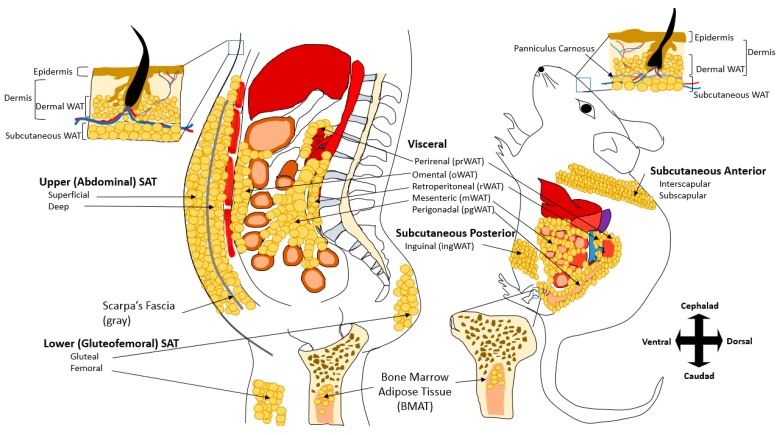Figure 1.
Comparison between Human and Rodent Adipose Tissues. White Adipose Tissues (WAT) are mostly visceral adipose tissue (VAT) and subcutaneous adipose tissue (SAT). Major visceral depots common in both humans and rodents include epicardial/pericardial (not shown), perirenal (prWAT), retroperitoneal (rWAT), and mesenteric WAT (mWAT). While humans have large omental (oWAT) fat, mice have large perigonadal (pgWAT) fat. SAT in humans can be divided into upper (abdominal) and lower (gluteofemoral). Abdominal fat in human can be further divided into superficial and deep, which are separated anatomically by Scarpa’s Fascia. In mice, SAT is divided into anterior and posterior. Dermal WAT (dWAT) is another fat depot that exists in both humans and mice. dWAT is located in the dermis and above the SAT (note: this separation is visible by the presence of striated muscular layer known as panniculus carnosus only found in mice). Bone marrow adipose tissue (BMAT or MAT) is also another adipose depot common in both species. Cephalad and caudad are also referred to as anterior and posterior in mice, respectively.

